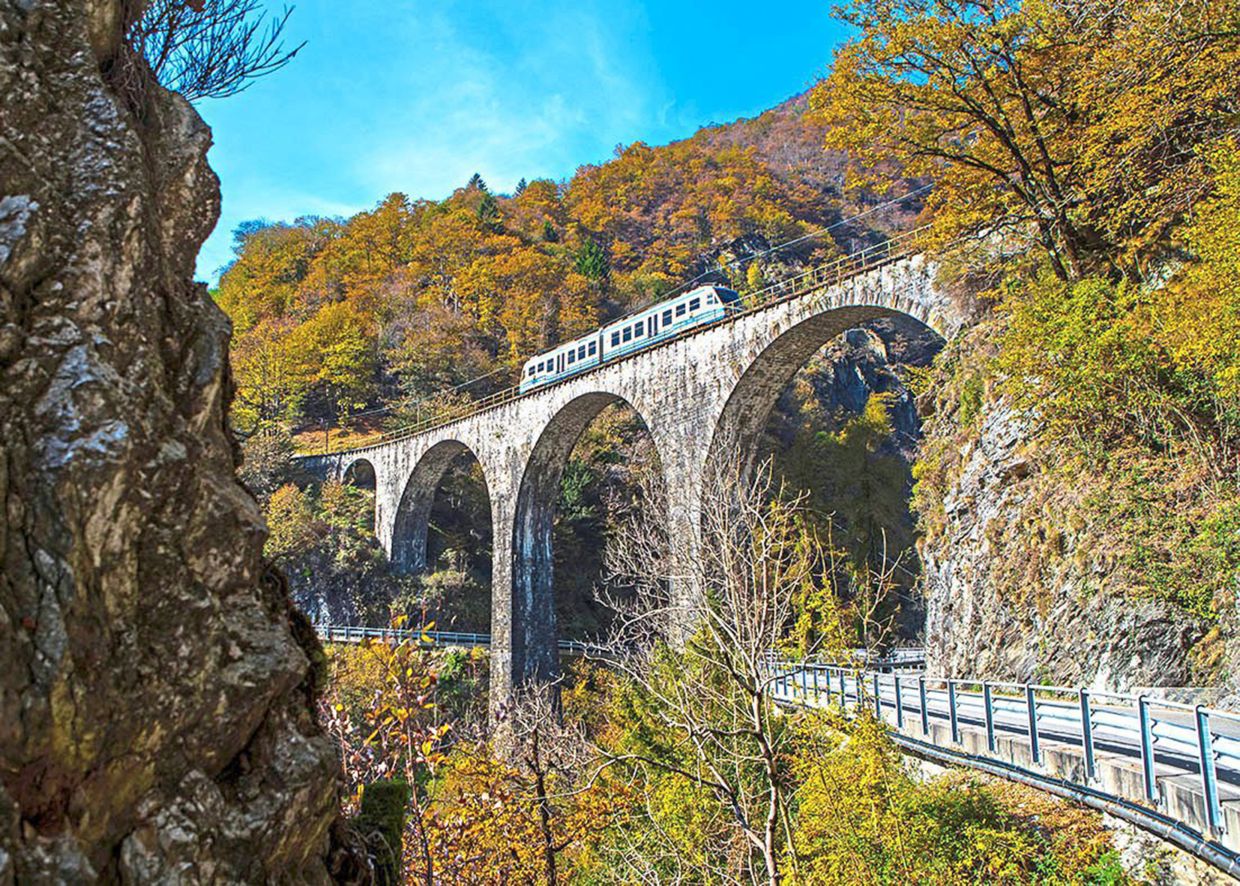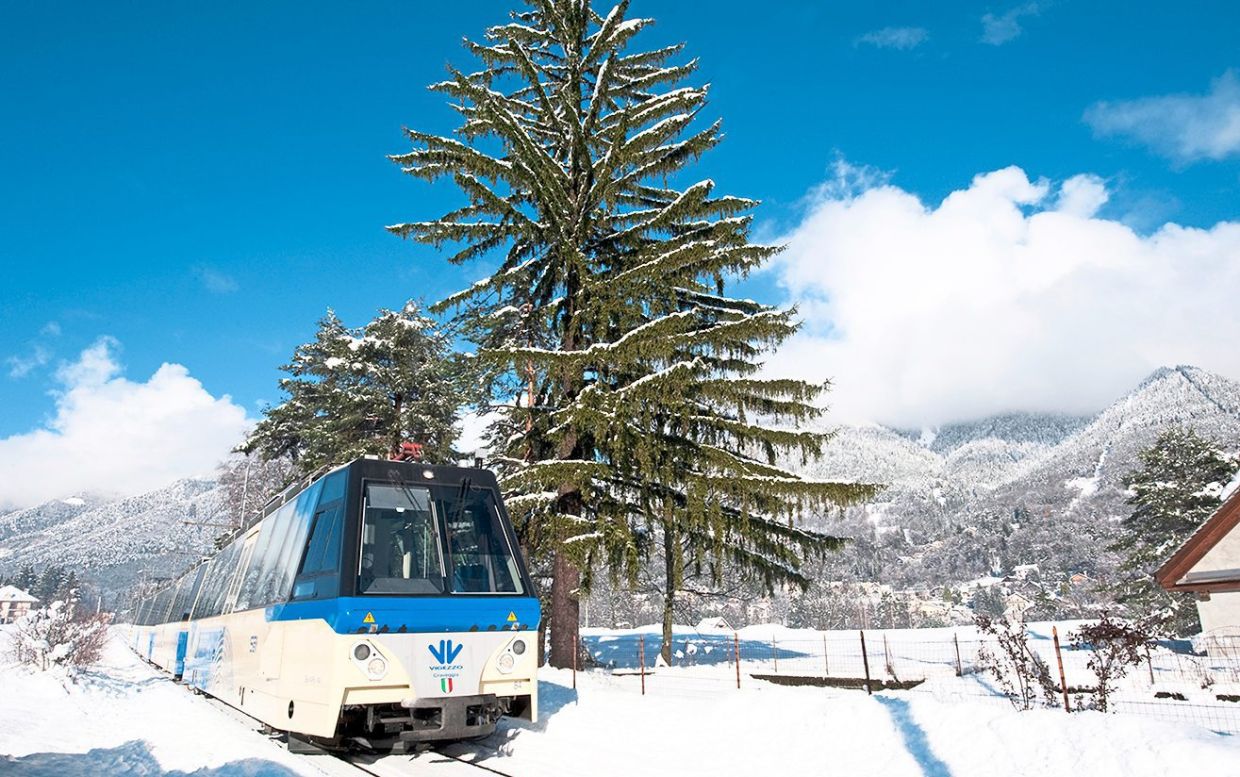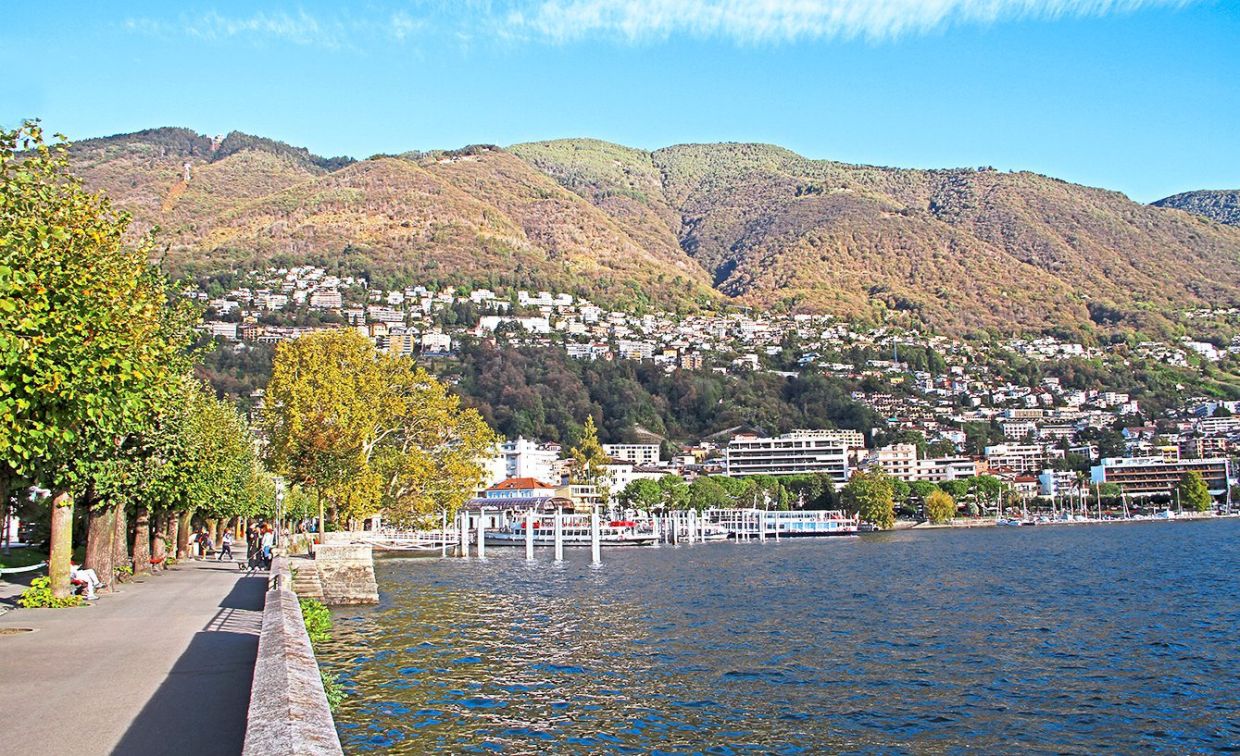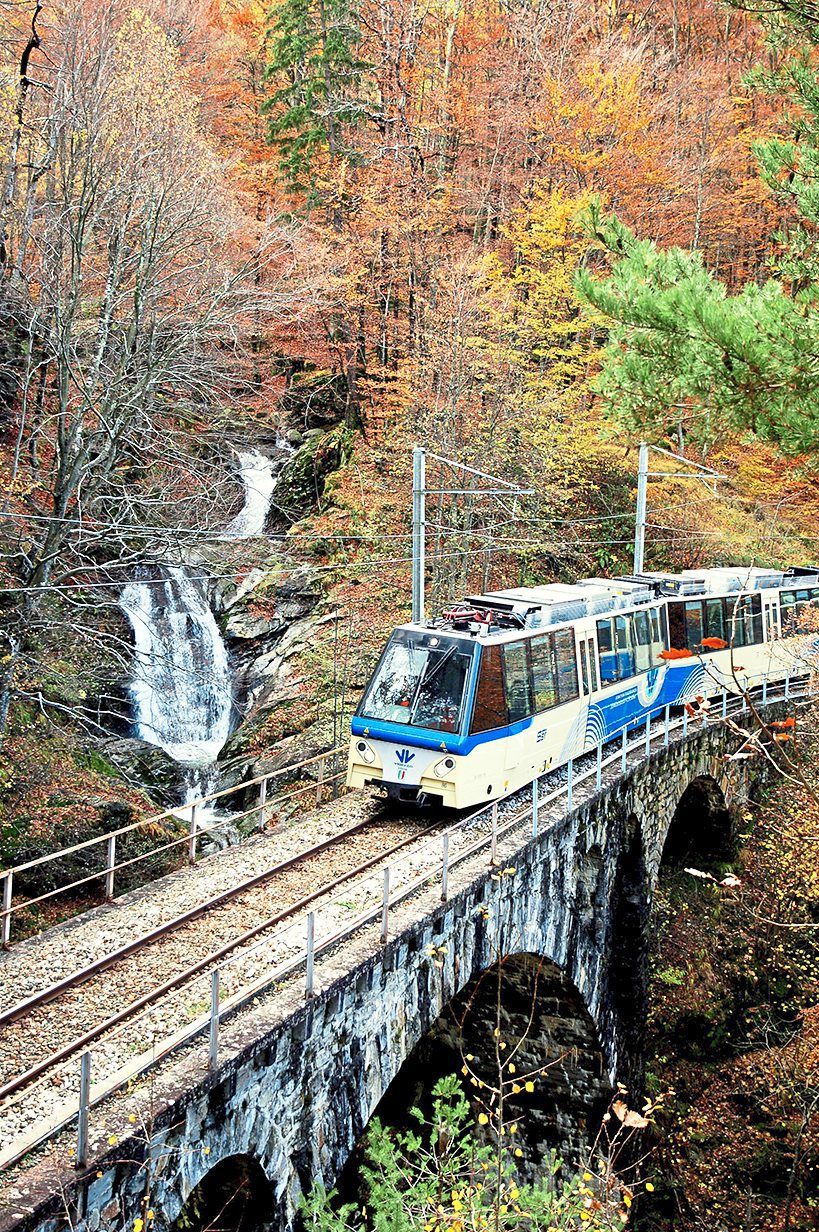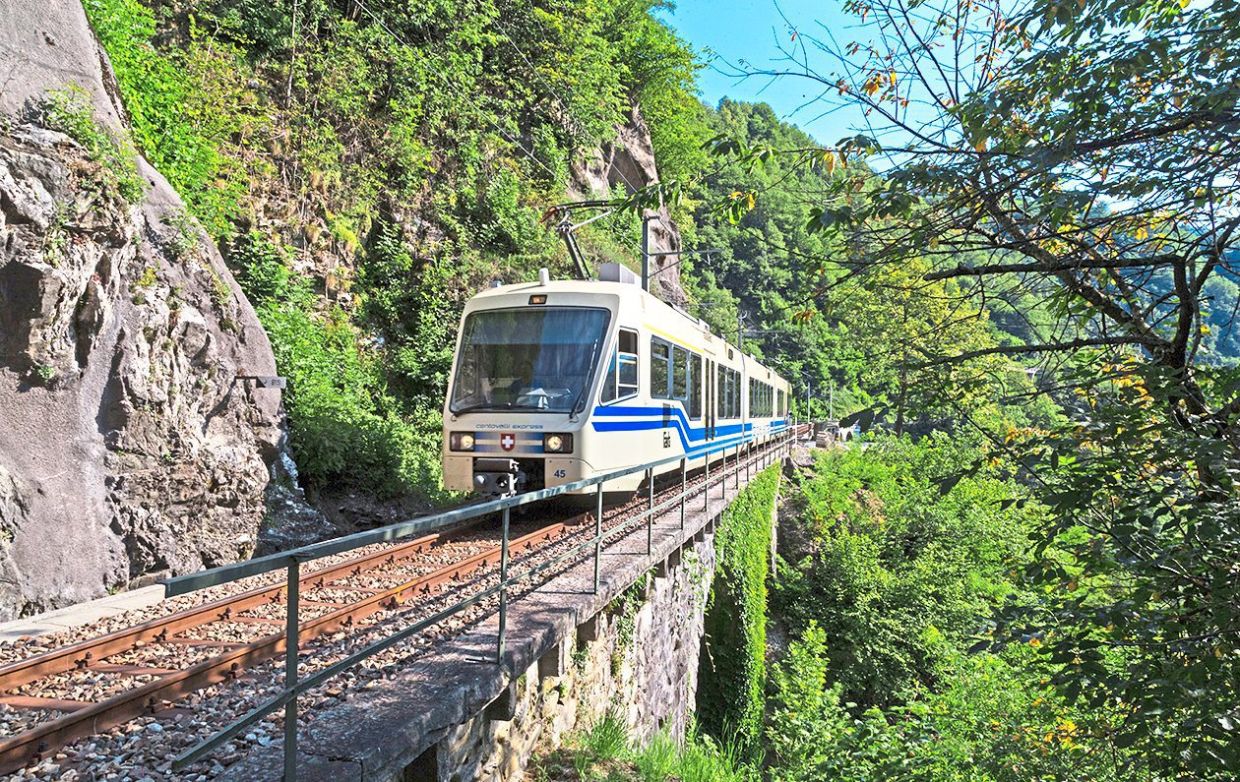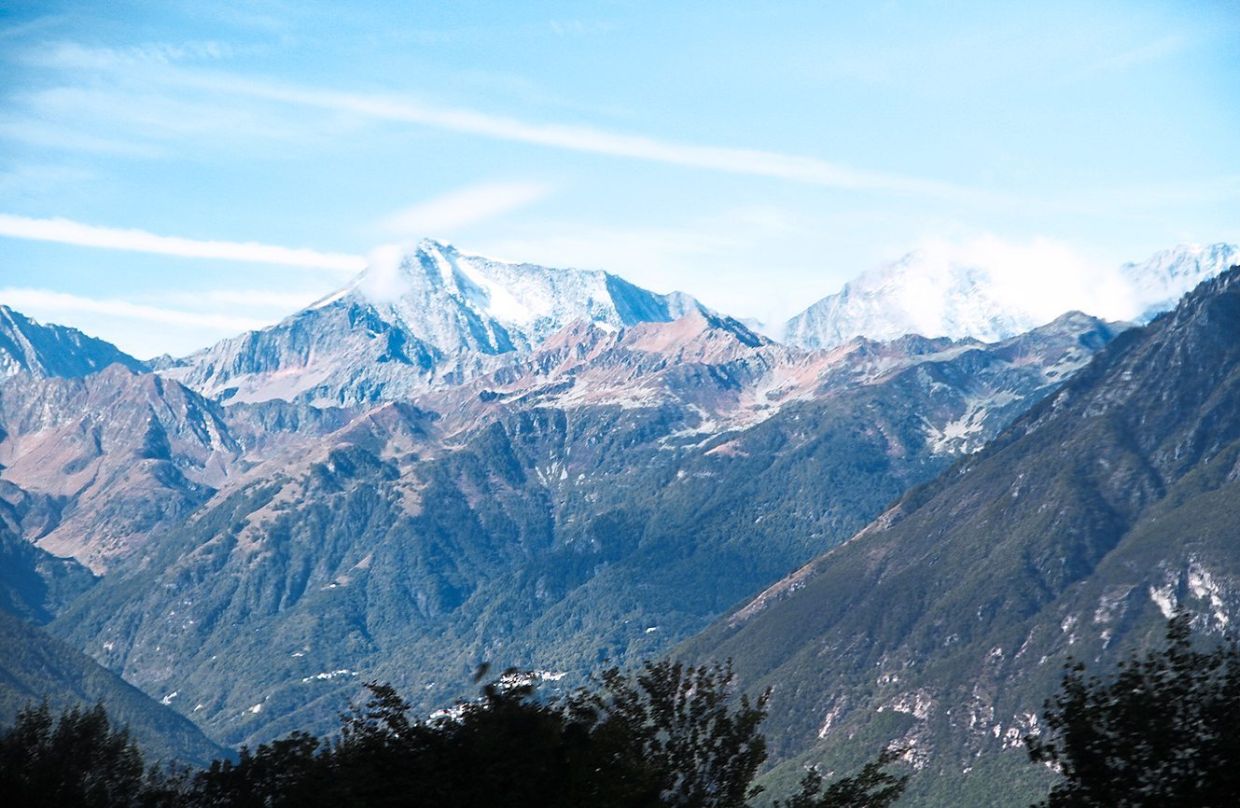A highlight of the rail journey is crossing high stone bridges. — MASSIMO PEDRAZZINI
My rail journey through the far southeastern region of Switzerland and into northern Italy commenced in Locarno at the rather expressive “Fart” station located below the main rail platforms. The railway is operated by the Ferrovie Autolinee Regionali Ticinesi (or Fart) in Switzerland and the Società Subalpina Imprese Ferroviarie (SSIF) in Italy.
Most Swiss railway journeys promise snow-capped mountains and jaw-dropping scenery of alpine lakes, rivers and lush meadows. Some journeys are more impressive than others, with the railway between Locarno (Switzerland) and Domodossola (Italy) on the Centovalli Express traversing some 100 valleys in two countries.
Opened in 1923, the railway that extends for 52km through valleys fed by glacial streams celebrated its centenary last year.
A celebrated railway
In his acclaimed book, The Great Railway Bazaar By Train Through Asia, author Paul Theroux headed off on his 1974 Asian rail odyssey on a train that passed through Domodossola. His cabin companion, Richard Duffill, from Lincolnshire, alighted at Domodossola Station to purchase food. The tale of the mysterious Duffill missing the train and Theroux’s efforts to reunite him with his luggage in Venice, several stations along the route, will fascinate dedicated train travellers.
The train to Domodossola also attracted author Bill Bryson, who described the journey as “a spectacular ride along the lips of deep gorges and forbidding passes, where farmhouses and hamlets were tucked away in the most inaccessible places, on the edge of giddy eminences”.
Ticino sights
The journey from Locarno to Domodossola begins in Ticino, the Italian-speaking Swiss canton. Switzerland’s southernmost province is located entirely south of the Alps and has a Mediter-ranean ambiance.
A side trip from Locarno to Bellinzona, the canton capital, before joining the train is recommended. Three castle fortresses in this railway junction town are listed as a Unesco World Heritage Site. The massive structures protected the medieval town, which is located in a strategic place on a once-important trade route from Italy through Bellinzona to Germany.
Bellinzona is on the main rail line from German-speaking Switzerland through to Lugano and then southward to Milan in Italy. Nearby, Ticino is an important canton for train buffs as Lugano is the departure station for the famous Bernina Express. This journey begins on a bus through Switzerland and northern Italy to Tirano for the departure station of the express.
Another place to visit from Locarno is the exclusive lakeside enclave of Ascona. Its old town is lined with narrow lanes where boutiques, restaurants and cafés appeal to a steady stream of tourists.
Like their Italian neighbours, the Ticinese live to eat. Dine in a grotto or village tavern on Italian-inspired cuisine plus locally sourced rice and wine. Ticino is the northernmost rice-producing region in the world. Specialty dishes include minestrone soup, polenta with braised meat or roasted rabbit, salami and cheeses like Piora or Zincarlin.
Merlot wines (both red and white varieties), Grappa and Nocino (a walnut-flavoured liqueur) are also produced in Ticino.
Fart through the valleys
The journey commences in Locarno and generally heads westward across a section of Piedmont in northern Italy to Domodossola. Locarno is located on the northern foreshore of picturesque Lake Maggiore near Ascona and just north of the Italian border.
It is important to join the train at the appropriate underground platform at Locarno Station. Occasionally, buses are used for the first section of the line when repairs are being made or the track is damaged, and it is important to inquire, especially if the platform is deserted.
The first five minutes of the Centovalli Express journey proceeded underground and then emerged in the leafy suburbs of Locarno, with houses gripping the steep slopes rising up from Lake Maggiore.
Trains travel on mostly single-track, metre-gauge rail, with 20km in Switzerland and 32km through Italy. Two-car electric units are typical, and rail stock has been upgraded with the introduction of panoramic trains.
While I made a direct journey from Locarno to Domodossola, there are several variations on the theme for adventurous travellers. The line is ideal for those who want to alight at certain stations and rejoin the next train.
Ponte Brolla, 10 minutes into the journey, is a good stop to alight for walks into the valley through which the Maggia River flows. Interestingly, farmers here store cereal crops in stone and wooden buildings known as torba.
Another possible stop for uninterrupted views of the valley is the village of Intragna, just a short walk from the railway station. Here, there is a viewing tower, and just off the village square, there is a museum. Also a highlight is the Isorno Bridge near the village of Intragna and Intragna’s gorge.
Verdasio provides access to the cable car that ascends to the car-free village of Rasa. The railway continues through the rugged and mountainous Centovalli and crosses the impressive arched Ruinacci Viaduct before entering Camedo. Just beyond Camedo, the track enters Italy at Ribellasca and remains in Italy until Domodossola, then through the Simplon Tunnel back into Switzerland.
At 830m, Santa Maria Maggiore is the highest point of the railway. Visitors who travel in winter can expect the small town to be covered in snow, making for an atmospheric Christmas market.
The small town has three museums: one celebrating local artists, another dedicated to perfume, and the most mysterious of all, one dedicated to chimney sweepers ...
As early as the 16th century, Vigezzo Valley was identified as the camifeger tal, Swiss-German for the “valley of chimney sweeps”. Back then, families were so poor that many would send their sons, as young as six, to work as chimney sweeps.
The medieval junction of Domodossola is the gateway to seven alpine valleys. The line northward from Domodossola through the Simplon Tunnel and back into Switzerland resurfaces at Brig for connections to the Swiss towns of Chur and Visp. The journey to Domodossola takes less than two hours, and the onward journey to Brig is another 30 minutes.
Italian trains may be used on the line from Domodossola, with connections through Brig and onto Frankfurt.
David Bowden is the author of Great Railway Journeys In Europe, published by John Beaufoy Publishing Limited in Britain (www.johnbeaufoy.com,) and available in bookshops or online.




